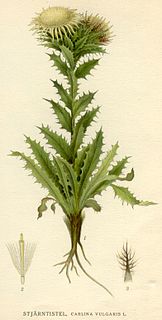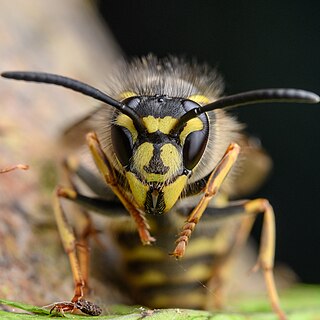| Tylenchorhynchus vulgaris | |
|---|---|
| Scientific classification | |
| Kingdom: | |
| Phylum: | |
| Class: | |
| Subclass: | |
| Order: | |
| Superfamily: | |
| Family: | |
| Subfamily: | |
| Genus: | |
| Species: | T. vulgaris |
| Binomial name | |
| Tylenchorhynchus vulgaris | |
Tylenchorhynchus vulgaris is a plant pathogenic nematode infecting pearl millet.
Common Era (CE) is one of the year notations used for the Gregorian calendar, the world's most widely used calendar era. Before the Common Era (BCE) is the era before CE. BCE and CE are alternatives to the Dionysian BC and AD notations, respectively. The Dionysian era distinguishes eras using the notations BC and AD. The two notation systems are numerically equivalent: "2021 CE" and "AD 2021" each describe the current year; "400 BCE" and "400 BC" are each the same year. The Gregorian calendar is used throughout the world today, and is an international standard for civil calendars.

The smooth newt, northern smooth newt or common newt is a species of newt. It is widespread in much of Eurasia, from the British Isles to Siberia and northern Kazakhstan, and introduced to Australia. Individuals are brown with an orange to white, spotted underside and reach a length of 8–11 cm (3.1–4.3 in), with males being larger than females. The skin is dry and velvety while the newts live on land but becomes smooth when they migrate into water for breeding. Breeding males develop a more vivid colour pattern and a conspicuous skin seam (crest) on their back.

Beta vulgaris (beet) is a plant which is included in the subfamily Betoideae of the family Amaranthaceae. It is the economically most important crop of the large order Caryophyllales. It has several cultivar groups: the sugar beet, of greatest importance to produce table sugar; the root vegetable known as the beetroot or garden beet; the leaf vegetable known as chard or spinach beet; and mangelwurzel, which is a fodder crop. Three subspecies are typically recognised. All cultivars fall into the subspecies Beta vulgaris subsp. vulgaris. The wild ancestor of the cultivated beets is the sea beet.

Rhabditida is an order of free-living, zooparasitic, and phytoparasitic microbivorous nematodes living in soil.

Proteus vulgaris is a rod-shaped, nitrate-reducing, indole-positive and catalase-positive, hydrogen sulfide-producing, Gram-negative bacterium that inhabits the intestinal tracts of humans and animals. It can be found in soil, water, and fecal matter. It is grouped with the Morganellaceae and is an opportunistic pathogen of humans. It is known to cause wound infections and other species of its genera are known to cause urinary tract infections.

Calluna vulgaris, common heather, ling, or simply heather, is the sole species in the genus Calluna in the flowering plant family Ericaceae. It is a low-growing evergreen shrub growing to 20 to 50 centimetres tall, or rarely to 1 metre (39 in) and taller, and is found widely in Europe and Asia Minor on acidic soils in open sunny situations and in moderate shade. It is the dominant plant in most heathland and moorland in Europe, and in some bog vegetation and acidic pine and oak woodland. It is tolerant of grazing and regenerates following occasional burning, and is often managed in nature reserves and grouse moors by sheep or cattle grazing, and also by light burning.

Carlina vulgaris, the carline thistle, is a plant species of the genus Carlina.

Frijoles negros is a Latin American dish made with black beans, prepared in Guatemala, Cuba, Venezuela, Puerto Rico, Mexico, and other nations in Latin America. The black bean, a legume of the species Phaseolus vulgaris, is usually purchased in either canned or dried form. One cup of dried black beans yields approximately 2 1⁄2 cups of cooked beans. Black bean soup is another commonly prepared Cuban favorite.

Vespula vulgaris, known as the common wasp, is found in regions that include the United Kingdom, Germany, India, China, New Zealand and Australia. It is sometimes known as the European wasp, but the same name is used for the species Vespula germanica or German wasp. Another name for Vespula vulgaris is the common yellow-jacket. In 2010, the ostensible Vespula vulgaris wasps in North America were found to be a different species, Vespula alascensis.

Pemphigus vulgaris is a rare chronic blistering skin disease and the most common form of pemphigus. Pemphigus was derived from the Greek word pemphix, meaning blister. It is classified as a type II hypersensitivity reaction in which antibodies are formed against desmosomes, components of the skin that function to keep certain layers of skin bound to each other. As desmosomes are attacked, the layers of skin separate and the clinical picture resembles a blister. These blisters are due to acantholysis, or breaking apart of intercellular connections through an autoantibody-mediated response. Over time the condition inevitably progresses without treatment: lesions increase in size and distribution throughout the body, behaving physiologically like a severe burn.

Desmoglein-3 is a protein that in humans is encoded by the DSG3 gene. In the skin epidermis Desmoglein-3 is expressed in the basal lower layers of the epidermis, and dominates in terms of expression on mucosal surfaces compared to Desmoglein-1.

Era Vulgaris is the fifth studio album by American rock band Queens of the Stone Age. Recorded from July 2006 to April 2007, it was released on June 11, 2007 in the United Kingdom and June 12 in the United States, having been released on June 8 in other countries. The single "Sick, Sick, Sick" was released in May, followed by second single "3's & 7's" in early June, and third single "Make It wit Chu" in October. The album debuted at No. 14 on the U.S. Billboard 200 charts, selling 52,000 copies in its first week. It reached top ten positions in other countries, such as No. 7 in the UK, No. 5 in Canada, and No. 4 in Australia. is the band's last album with Interscope Records
Tylenchorhynchus claytoni is a plant pathogenic nematode.
Tylenchorhynchus maximus is a plant pathogenic nematode infecting barley.
Tylenchorhynchus nudus is a plant pathogenic nematode cause dwarfing disease specially at rice plant.
Tylenchorhynchus phaseoli is a plant pathogenic nematode infecting pearl millet.
Tylenchorhynchus zeae is a plant pathogenic nematode infecting pearl millet.
Tylenchorhynchus is a genus of nematodes including many species of plant parasites. The classification of stunt nematodes - those including the genus Tylenchorhynchus - is unstable; many newly discovered species within this genus are reconsidered to be actually subspecies. Stunt nematodes such as Tylenchorhynchus and the closely related genera, Anguillulina and Merlinia, include more than 250 known species. Members of these genera possess similar anatomy and may be easily mistaken for one another. Some debate has led to the classification of single species under different names in two distinct genera.
T. vulgaris may refer to: